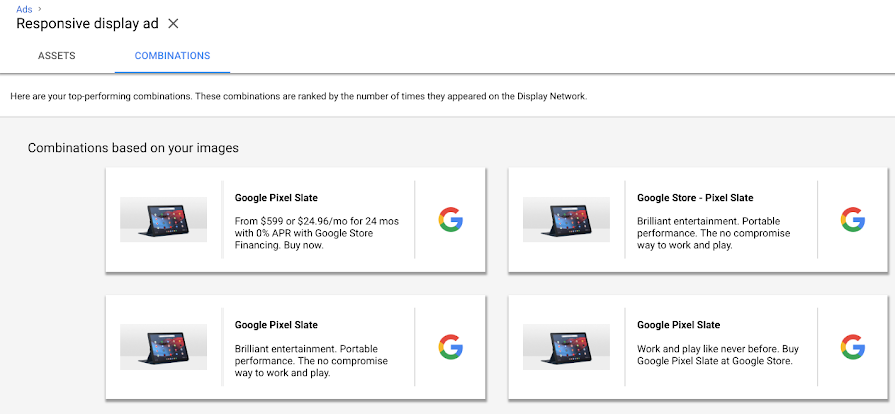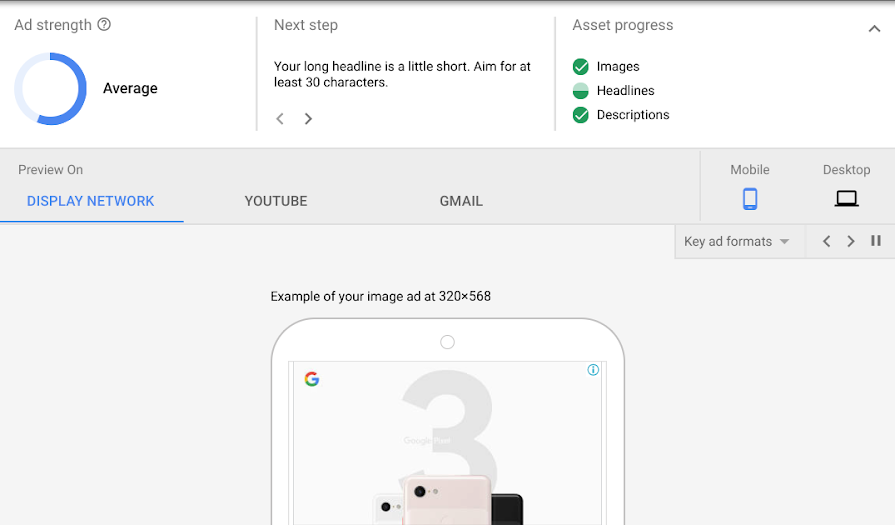Google recently announced via a blog post, that they are introducing three new features for Responsive Display Ads that will improve the functionality of the ad network, providing marketers with new reporting capabilities.
Responsive Display Ads have overtaken standard ads as the preferred ad format for the Google Display Network. As you know, these ads can be used in both your conventional Ad marketing as well as for smart Ad displays.
To generate a responsive display ad, marketers have to upload – images, logos, headlines, descriptions and video to the Display Network and Google automatically generates responsive ads that work across all devices.
Here are the top benefits of Responsive Display Ads:
- Ad Optimization – When you use responsive display ads, Google’s machine learning tools use advanced algorithms to determine the best combination for your assets, based on your ad’s performance over time.
- Better Reach – Responsive display ads use several types of assets like headlines, logos, images, and even videos. Google automatically adjusts the size of your ad to fit the available space best. This means your Ad reaches a broader audience than before. For instance, it may be displayed as a dynamic text ad on one device, whereas it can be displayed as banners on another site.
- Makes Ad Management Easy – Using responsive display ads, managing your ad campaigns is easier than ever before. You can quickly manage different ad portfolios, segregate ads into various groups, thereby helping to improve your marketing.
Google is now rolling out three new features for Responsive Display Ads. Let’s take a closer look at these features being introduced.
1. Include Video Assets
Image via Google
You can now include videos as assets while creating Responsive Display ads. This new feature ensures that your ad has an expanded reach. When you use videos as an asset, Google automatically displays videos when machine learning tools predict that videos will perform better.
You can select up to five different videos to be included in your responsive display ad. You can include URLs to five different videos from your YouTube channel.
Using Ads with video assets remains the same. The process for ad creation, optimization and testing are as usual.
Image via Google
Google has introduced a new combinations report that provides added insight into the performance of your ads. This report helps you to test the effectiveness of different asset combinations so that you can easily find out the top-performing combinations.
The combinations report shows the list of asset combinations that are being automatically generated in your responsive display ads campaigns and helps you find out the individual performance levels. The report has a separate section allocated to various asset combinations like – text, images, dynamic feeds, headlines, and videos.
To check out this report in your Google Ads account, head to “View Ad Details,” under the Ads tab, and choose “Combinations.
3. Ad Strength Scorecard
Image via Google
The final feature, this helps you to figure out the strength of your ad before it goes live. The ad strength is displayed as a visual scorecard, with ratings like “Average, Good, Poor and so on.” Google monitors the strength of your assets like unique headlines used, complete and relevant descriptions, image quality and other factors to determine the strength of your ads.
Additionally, you can also find further recommendations to improve the score of your ad, by clicking on the “Next Steps,” section.
Which of these three new features are you likely to use as a digital marketer?








